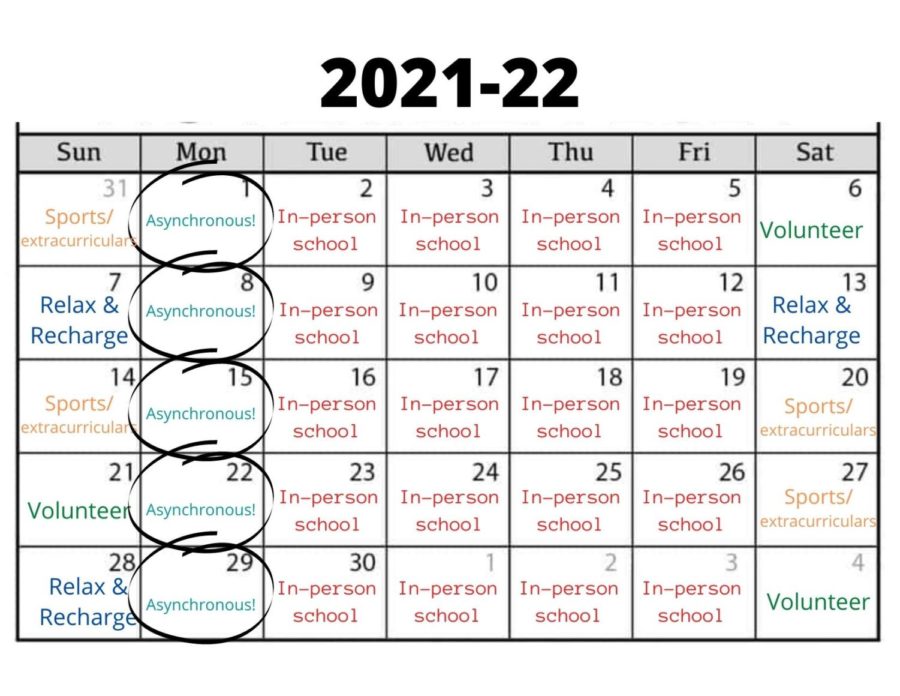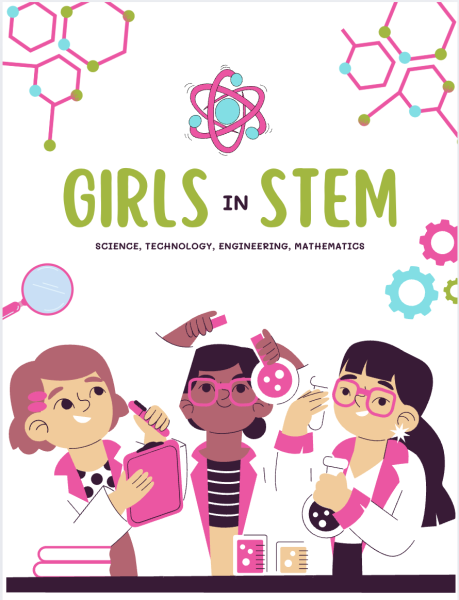Bring Back Asynchronous Mondays
As a post-pandemic world begins to form, asynchronous Mondays deserve a place
The 2021-2022 school year has brought students back into the building for the first time in more than a year. With a few safety modifications including masks, testing and moving events such as Homecoming outdoors, Arlington Public Schools (APS) has worked to create an experience similar to that of a pre-COVID school year. However, neither students nor teachers are the same people they were pre-COVID, and their work-weeks should not be either. Despite the tragedies and hardships endured as a result of the pandemic, which are not to be mitigated, lessons have been learned over the past 20 months. We have adapted and made opportunities out of the worst situations. From international virtual conferences that have connected people who never would have met, the creation of small businesses and the discovery of new hobbies, it is clear that some changes are here to stay. Another one of these positive changes was the formation of asynchronous Mondays.
While it is almost universally accepted that doing school entirely virtual was not sustainable long term, asynchronous Mondays provide a balance between fully virtual and fully in-person school. Asynchronous Mondays allow students to practice independence while still getting in-person support from teachers.
Having a day dedicated to getting already-assigned work done will improve student performance in the classroom. Students have busy schedules, which often include jobs, sports and family life. These activities are only exacerbated in a county like Arlington where “average” is simply not good enough. Students frankly do not have the time to complete work assigned in six IB and AP classes as well as find time to sleep. Due to the amount of work they receive, students attempt to multitask while in school. While it may appear that a student is listening to a lecture or taking notes on their computer during class, they are actually rushing to complete work in another class, leading to quality of work suffering in not just one but two classes. While asynchronous Mondays do mean less time teaching new content, students will learn more and their time spent learning will be more worthwhile, as they will actually be engaged (not to mention, better rested). Teachers would be able to spend less time re-explaining the lesson and more time diving deeper into material.
Students are not the only ones who benefit from asynchronous Monday’s. The virtual school year emphasized to teachers the importance of forming connections and getting to know their students to many teachers. However, this can be difficult when every spare moment must be spent planning lessons or grading (teachers have lives outside of school too!). By allowing teachers to plan on Mondays, lesson quality would improve due to more time spent thinking them through; then, and teachers would have more time in class to take questions and connect with students. This would directly improve the quality of education in Arlington.
Office hours are another benefit of asynchronous Mondays, in that they which allow for student-teacher connection. Currently, Generals Period (GP) is one of the only opportunities for students to ask questions without missing after-school activities or sleep, although this is perpetually made more difficult by “no movement Mondays.” When allowed to seek help, GP is often crowded and students are forced to choose between teachers as there is not enough time to work on more than one subject. With office hours, however, students would receive individualized attention and could visit multiple teachers throughout the day. This also encourages students to take initiative and build on connections formed in the classroom, as they will be expected to do in college. Not only do these relationships improve the quality of education, make school more enjoyable, and improve student mental health,; student-teacher relationships can help students with letters of recommendation for admission to college, potentially kickstarting a successful career.
According to an article by the University College London, taking breaks from schoolwork on weekends boosts performance, energy, and memory. Breaks also can improve health and reduce stress. Unfortunately, due to homework assigned over the weekend, students are not able to take advantage of these days off and therefore return to school on Monday just as burned out as they were the previous Friday. By giving students the opportunity to complete work on Mondays, Saturdays and Sundays can be used for students to take a break and explore interests outside of school while still getting work done effectively during the school week.
Of course, four day school weeks are not effective for everyone. Mainly, they pose childcare challenges for families with young children. Elementary- aged children are less independent and many of their lessons center around providing social interaction. This makes virtual lessons ineffective and requires a parent to be present during asynchronous work. For this reason, it is important to create a distinction. The most effective path forward for high school is a four day in-person week with one asynchronous day. On the other hand, elementary students should continue with five days in person. Middle schools are less clear cut due to the range in maturity levels but with a few adjustments, which should be welcomed and accepted as one size does not fit all when it comes to education, an asynchronous day could work for middle school students as well.
While making this change may seem daunting, one thing the pandemic has taught us is how to adapt. This is simply an extension of that, adapting to the way life has changed because of COVID-19, this time, for the better.













